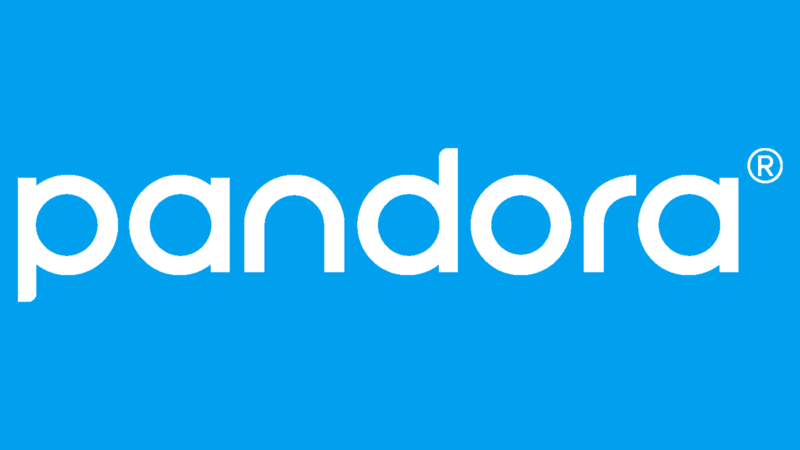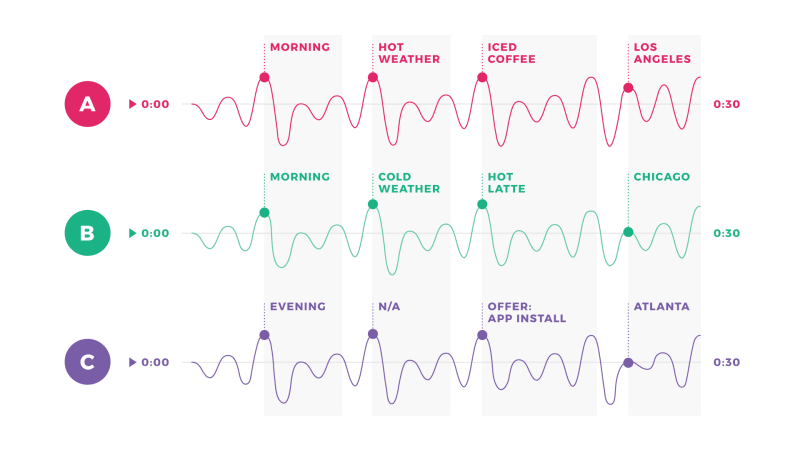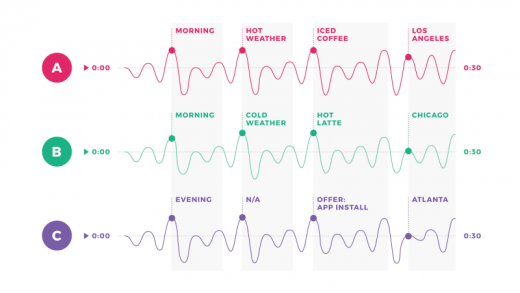Pandora rolls out new Dynamic, Sequential and Short-Form Audio ads
This is the first time the audio platform has offered anything beyond standard :15 and :30 audio ads.

Innovation in audio ad formats doesn’t come around very often. Until now, just about the only variable has been how long they run, with :15s and :30s dominating the audio ad landscape.
Today Pandora has changed that.
The audio platform unveiled new audio ad capabilities on Tuesday, and it says it’s the first to test them at scale.
Say hello to Dynamic, Sequential & Short-Form Audio Ads
Claire Fanning, vice president of Ad Innovation Strategy for Pandora, told me that these new formats are the company’s first major innovation in audio ads.
Pandora is releasing the units now, Fanning told me, because “audio is going through a bit of a renaissance and it has over the past several years, and consumption trends are driving innovation.”
The changes, in more detail, are:
Dynamic Audio Ads, which allow marketers to create hyper-personalized ads in real time. Pandora uses the extensive listener data its collected over the years, such as age, gender, location, weather and music genre, to populate ads with personalized segments. The company says that the collaborative process with the client can create thousands — or millions — of permutations for each ad. Here’s an example:

Sequential Audio Ads are just what they sound like — ads that are released in a sequential order. Like the iconic Burma Shave roadside ads from the 20s through the 60s, they are delivered at regular intervals to tell a larger brand story.
And finally, Short-Form Audio Ads that complement longer offerings. At only :04 – :10 seconds long, these ads can augment a campaign with ultra-simple messaging that runs alongside longer pieces.
Fanning said, “it all starts with the notion that we don’t think one size fits all when it comes to ads.”
“We’ve always felt like there’s a more major opportunity to incorporate personalization into audio ad strategies,” Fanning said. “And what we’ve done is a combination of proprietary testing and hypotheses, along with the merger of technologies driven by a million ads, to come up with this personalization package.”
Fanning told me that companies can use a mix of the formats to tailor their messages:
You could, for example, start with the 30-second unit where maybe it has your longer description of the value proposition of a product, and then follow it up with a ten-second ad unit that validates the previous messaging or creates more top-of-mind awareness while not necessarily adding to fatigue, but really just adding opportunities for frequency.
So the notion that you have these different personalization levers to pull as a brand really has helped support a conversation about what [the client’s] audio strategy is. What is the story they’re looking to tell? They not only have a 30-second ad to tell that story, but they can do it over several audio spots.
The ad units have shown promise in testing with several of Pandora’s clients. In one test with Lay’s, according to a release announcing the new units, “short-form audio yielded a 56 percent higher return on ad spend with the highest return for ages 35-59 and highest lifts in awareness for the 18-34 demo. Lay’s also found that the first and last flavor mentioned in the spot were the most impactful.”
Marketing Land – Internet Marketing News, Strategies & Tips
(47)



